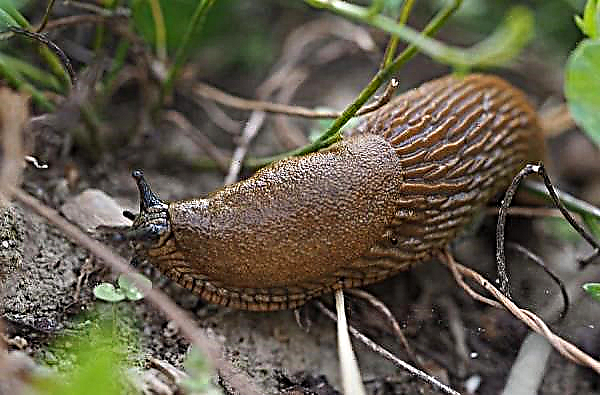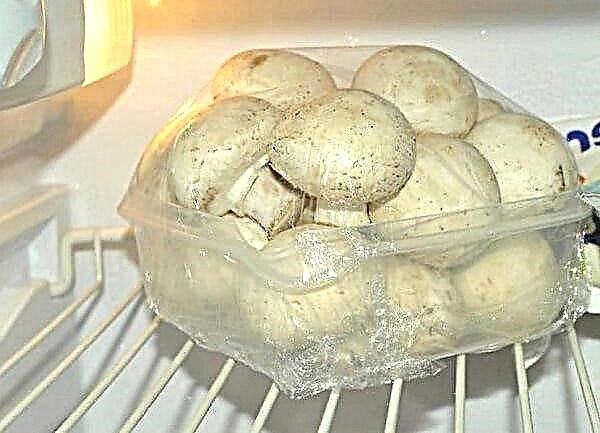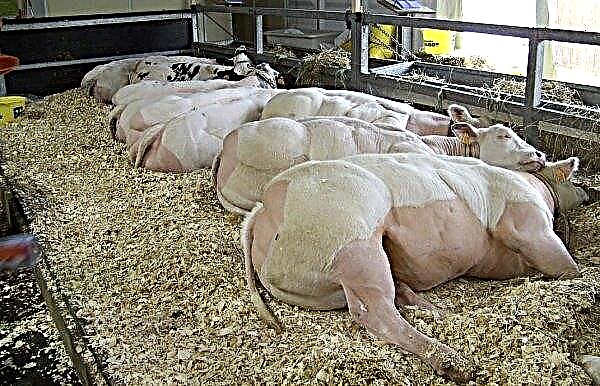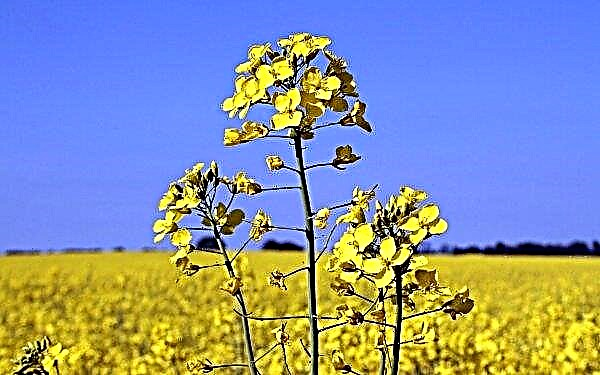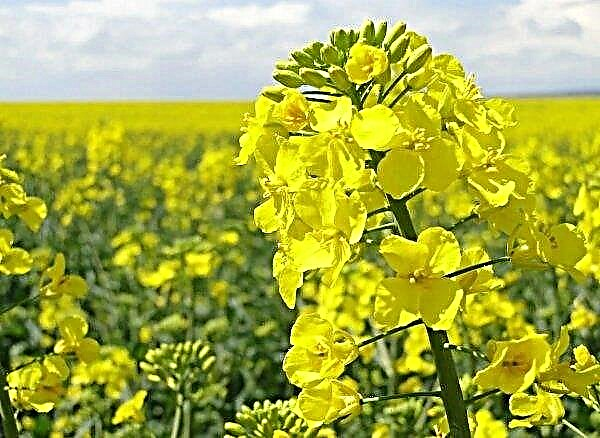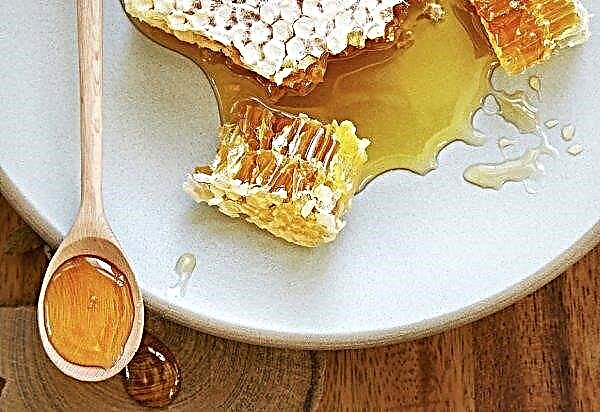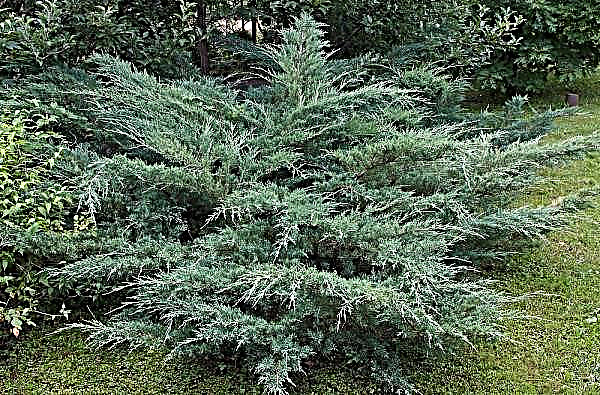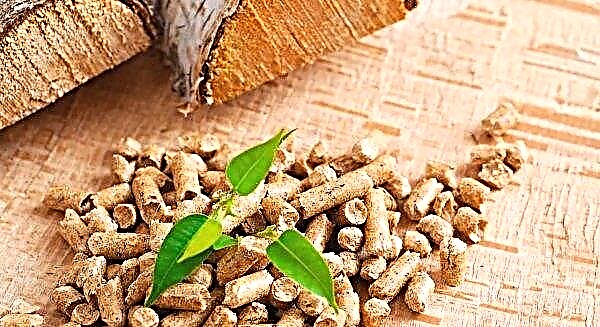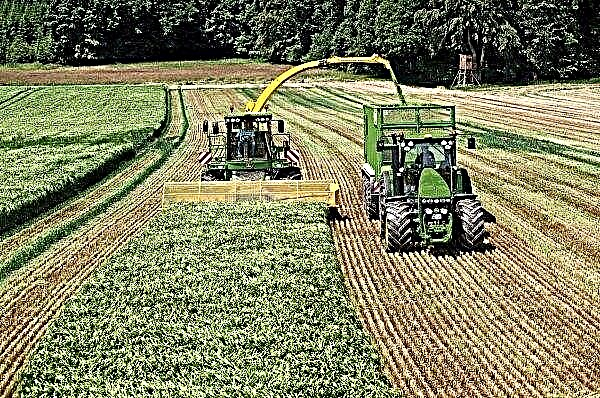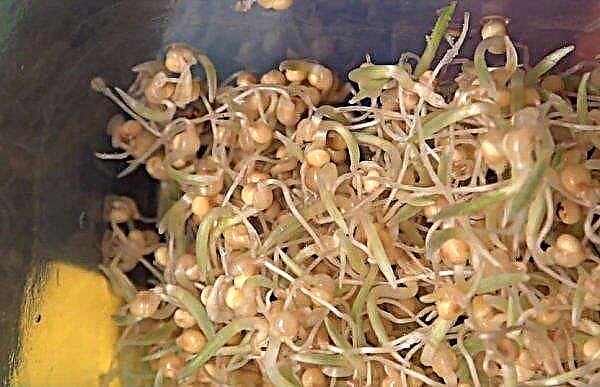In small areas near the house, you can create beautiful compositions from evergreen conifers. For this purpose, Baby Blue cypress with an unusual color of needles is suitable. You will learn how to grow this plant and take care of a tree from the article.
Botanical description of the plant
Baby Blue Pea cypress is a slow-growing compact evergreen coniferous tree with a cone-shaped crown resembling thuja. The botanical name in Latin is Chamaecyparis pisifera Baby Blue. Another possible name is Baby Blue Sawara Cypress. Belongs to the genus Cypress (Chamaecyparis). Type - dwarf conifers. Variety or variety - Baby Blue.
 Easily resists occasional droughts, cold, heat, winds (excluding winter) and urban conditions
Easily resists occasional droughts, cold, heat, winds (excluding winter) and urban conditions
Botanical Description:
- The bark is brownish-brown or reddish, the structure is scaly, cracked, and looks artificially aged. The main skeletal branches grow horizontally or slightly wilt.
- Young shoots are flat. Annual growth is 8–12 cm.
- The needles are scaly (up to 1 cm), located on branches with oppositely short bundles and longer unbranched shoots. Young plants have needle-shaped leaves. The aroma is not pronounced.
- The texture of the needles is feathery, very soft and rather dense. The color is a pleasant silver-blue hue, in cold weather acquires a bronze color.
- Male (small, oval) and female (round up to 1 cm) scaly cones with 4-6 shields. For their small size, the variety is also called pea.
- Seeds in the amount of 2–5 pieces ripen in the first year and are equipped with long, wide wings.
- Plant height 1.8 m, crown diameter 1.2 m.
The cypress is frost-resistant and can withstand winter temperatures of -20 ... -30 ° C. This makes it possible to grow it in regions with a cold climate, which is typical for most Russian latitudes.
Did you know? In the color palette under various numbers, the paint “baby blue” means delicate shades of blue.
When touching the soft, as if covered with moss, leaves of Baby Blue cypress, there is no rough and prickly sensation that occurs when in contact with many evergreen conifers. Therefore, the plant is safe for playgrounds where children play or pass by.
Origin of name
Cypress Baby Blue has a very long name, often with the use of other related colloquial and Latin names. To understand what lies behind the name of the cypress, you should trace the history of its origin.
Soft needles the plant is obliged to belong to a special source group. The parent is a tree that grows in the wild on the islands of Japan, reaching 30–45 m in height - false cypress Savara (chamaecyparis pisifera). This plant has three different forms with very different needles. One species has soft, mossy foliage and is called the Squarrosa Group botanists. In 1934, a Boulevard Cypress variety was obtained from this relative, with a soft, as if moss-covered blue needles, which is now one of the most popular varieties of Sawara cypresses, and is widely grown throughout the world.
 Baby Blue cypress is a dwarf form of the Boulevard variety and its sport. Plant sports are significant deviations from the varietal qualities of a culture (genetic mutation) that have occurred regardless of growing conditions.
Baby Blue cypress is a dwarf form of the Boulevard variety and its sport. Plant sports are significant deviations from the varietal qualities of a culture (genetic mutation) that have occurred regardless of growing conditions.
In 1990, an employee of an Australian nursery in Sydney noticed an unusual branch on the growth of Boulevard Cypress, which was more intense in blue than the main plant. This stalk, after removal and rooting, gave rise to the cultivation of the Baby Blue cypress variety, which was introduced to the public and other producers in 1993, and has since become a favorite among lovers of beautiful evergreens.
Landing
Before planting, select a place in the garden that mimics the natural growing conditions of a cypress tree - here it will grow for a long time (up to 15 years).
The plant grows better in moist but well-drained soil. It can tolerate most types of soil (chalk, clay, sand, loam), but prefers fertile land with a slightly acid reaction.

Exclude areas where stagnant water accumulates and rocky soil is found under the topsoil. It is better to drop him in a slightly shaded place, protected from winter winds and drafts, for example, under the cover of buildings or a fence.
The conifer needs bright, but not direct lighting, it will also tolerate light shading. The lack of light leads to yellowing and shedding of needles. Under sunlight, the plant forms a dense and brightly colored crown.
 To increase soil fertility, mix organic materials, such as compost or humus, with garden soil when preparing a planting site.
To increase soil fertility, mix organic materials, such as compost or humus, with garden soil when preparing a planting site.
To give a young tree a good chance of successfully rooting and developing, follow a simple planting instruction:
- The best time for planting is late autumn or winter, when the plant is at rest.
- Prepare a place for the seedling by removing weeds, stones and coarse roots. Dig and loosen the soil thoroughly.
- Dig a planting hole about 2–3 times the diameter of the root coma and to a depth sufficient to accommodate the roots. After planting, the root neck of the tree should be in the ground at the same level as in the container.
- Ephedra need well-drained soil, so put drainage of stones, broken bricks or pebbles with a layer of 10–20 cm in the planting pit.
- Soak the root ball if you are planting a specimen purchased in the nursery, and water the soil well in a dug hole.
- Squeeze the shipping container and carefully remove the root ball. Free the lower roots from the substrate, leaving the rest of the coma intact.
- Set the plant in the center of a dug hole, spread it. Fill it by gently tamping the soil around the sides of the root coma to remove air pockets. Make sure the tree is upright and not loose.
- Thoroughly and evenly pour the planted cypress and lay a layer of mulch on the soil surface.
- The distance between the trees (in case of planting in groups) should be 2-3 m, and when placed in a hedge - 1 m.
- Check the tree regularly, as the most critical point in survival is the first few weeks after planting.
Video: Planting and features of care for cypress
Care
In order to develop well, coniferous plantings require careful care, which consists in timely watering and providing top dressing, loosening and mulching, as well as in careful monitoring of plants in order to prevent harmful lesions.
Watering and feeding
Drought can be fatal for newly planted cypress trees, whose roots did not have time to take root. Constant water supply at this time is vital to creating a deep and strong root system. Insufficient and surface watering leads to wilting and yellowing of needles, therefore, the plant should be watered abundantly so that the moisture reaches all the roots.
 Mature trees need moderate irrigation, and more often in extreme heat - long dry periods can be fatal for cypress
Mature trees need moderate irrigation, and more often in extreme heat - long dry periods can be fatal for cypress
Fertilizing fertilizers for conifers is necessary for the tree for healthy development and increase endurance. Fertilization of young seedlings is preferably carried out with water-soluble preparations, as this allows faster absorption of useful elements. Adult specimens are fed with substances of prolonged action, which release the necessary nutrients as necessary for the nutrition of the tree.
Fertilizers are applied before the start of new growth in spring and mid-autumn on cool days.. You should not feed cypress in the winter at rest.
Important! To avoid chemical burns to the root system of plants, follow the instructions for the ratio of dilution of fertilizer with water, avoid the introduction of chemicals in the hot summer months and immediately after transplantation.
To correctly assess the need for culture in useful elements, it is necessary to monitor the state of the cypress. Lack of nitrogen leads to poor growth and pale color of needles. In the absence of iron, it turns yellow or turns white, and with a deficiency of phosphorus, it acquires a reddish hue.
Loosening and mulching
Cypress need periodic loosening of the earth in the zone of root growth to ensure air permeability of the soil. Digging depth is 10–20 cm, depending on the age of the plant. After this procedure, the areas near the trunk should be mulched to avoid loss of moisture and drying out the roots, which is very important for coniferous crops. Try to push the layer of mulch away from the trunk.
 Spring mulching with a large amount of organic compost is very useful for the plant, as it replenishes the soil with the necessary elements for successful development. As a material for mulch, peat, sawdust, compost, fallen leaves, bark, needles and disassembled cones are suitable
Spring mulching with a large amount of organic compost is very useful for the plant, as it replenishes the soil with the necessary elements for successful development. As a material for mulch, peat, sawdust, compost, fallen leaves, bark, needles and disassembled cones are suitable
Pruning
After the cypress has taken root, it practically does not require forming pruning except for sanitaryin which the diseased and dry branches are removed. In addition, the tips of the shoots of a young coniferous tree are cut, which are extended and knocked out of the common conical shape. When grown as hedges, Chamaecyparis is pruned twice a year at any time between late spring and early autumntrying not to trim older wood.
Important! Slices on coniferous plants can not be covered with garden varieties, because the released resin is a natural protection against the penetration of infections.
Wintering
Cypress is a frost-resistant culture, can winter without shelter and withstand frosts to -20 ... -30 ° C. But the main cause of tree damage in the winter is strong winds, bright sun, icing and a heavy layer of snow. These factors can lead to sunburn and cold burns, damage to the trunk and branches, drying and dying of needles, overturning of the whole plant.
Young, not yet strong specimens are especially sensitive to such negative consequences.. For this reason, in winter, to protect the plant from strong wind and sun, you need to wrap the cypress with cover material, cotton cloth or burlap. For tall trees, it is advisable to build a frame to provide air movement around the branches, and just cover small seedlings with wooden crates or cover with lapnik.

Possible diseases and pests
Like any plant, coniferous cypress is susceptible to a number of diseases that can damage or destroy it.
The most dangerous are pathogenic lesions caused by fungi, bacteria or viruses.. The disease can affect the needles, branches, trunk, roots, or some combination thereof. In some cases, trees can be saved by applying fungicides, sanitary pruning of affected areas, or removing neighboring plantations to ensure air and light permeability, since in thickened plants without proper airflow, diseases can spread easily from tree to tree. In extreme cases, the only solution is to remove the whole plant.
Possible diseases of conifers:
- rust;
- Fusarium
- shute;
- cancer (tar, rust, ulcerative);
- wilting and root rot;
- vascular bacteriosis.
 If you plan to treat a diseased tree, follow all the instructions in the instructions when using a fungicide, and do not forget about personal protective equipment
If you plan to treat a diseased tree, follow all the instructions in the instructions when using a fungicide, and do not forget about personal protective equipment
Possible pests:
- bark beetle;
- nematodes;
- Hermes
- spider mite;
- cypress mole;
- cypress cyanide beetle;
- sawflies;
- aphid;
- scale shield.
 To combat use systemic pesticides or targeted drugs
To combat use systemic pesticides or targeted drugs
Despite the impressive list of possible diseases and pests, cypress is quite resistant to damage, and preventive measures will reduce the risk of disease to a minimum.
Prevention:
- Before planting, carefully inspect the seedlings for symptoms of disease and pest damage and discard diseased specimens.
- Do not plant susceptible species near infected trees.
- Promote good air circulation through adequate distance between trees and weed control.
- It is possible to improve the energy of a tree and increase its immunity with the help of timely mulching, watering and fertilizing.
- Do not cut cypress with damp foliage.
- If symptoms appear, use appropriate chemicals.

The use of wood in landscape design
Conifers are great for landscaping, and cypress is no exception.
Soft and bright silver-blue or blue-green foliage wraps around the branches and forms a dense straight bush. The conical structure, dense crown, the texture and color of the needles, the small size of the tree give a special charm to this elegant cypress tree and make it possible to add a contrasting touch to the surrounding landscape.
Did you know? Oil from young shoots of cypress was used to impregnate ancient papyri in order to prevent rotting of manuscripts.
The cypress tree is beautiful and a separate tree, acting as a living garden sculpture and being a focal point in the overall composition, and in the form of a hedge along pedestrian paths and at the foundation of the house, emphasizing the linear landscape features. Planted around the gazebo, the conifer will create silence and solitude. Due to its small size, cypress can be grown in a container for decorating the home garden and glazed balconies in cool climates.
Its regular conical shape and year-round blue needles combine well in the flower beds with summer orange flowers, and in the fall with yellowed foliage, being a great addition to rock garden or garden ceramics and boulders. Cypress can be used among stunted shrubs, succulents and perennials, or plant a group next to each other on a large lawn. It easily tolerates pruning, so you can create a composition of longline and round shapes in the form of pompons, which corresponds to the image of Asian gardens.
 It is more colorful in color than other conifers, and is able to become the main accent when creating alpine slides or in the design of original flower beds and garden lawns
It is more colorful in color than other conifers, and is able to become the main accent when creating alpine slides or in the design of original flower beds and garden lawns
Take away part of the garden plot to create a garden design with the help of coniferous crops, and the pea cypress is perfect for this purpose and will fit well into the environment - its blue-gray needles will revive the colors. In winter, when the rest of the landscape is bare, gray or covered with snow, the appearance of evergreen needles will please the eye. Observing all the recommendations for growing, you will get a beautiful and decorative tree to decorate your garden.

